3 Simple Self-Stretching for Chronic Lower Back Pain
I’d like to share some simple self-stretching techniques for chronic lower back pain, one of the most common and frustrating issues affecting people of all ages, from...
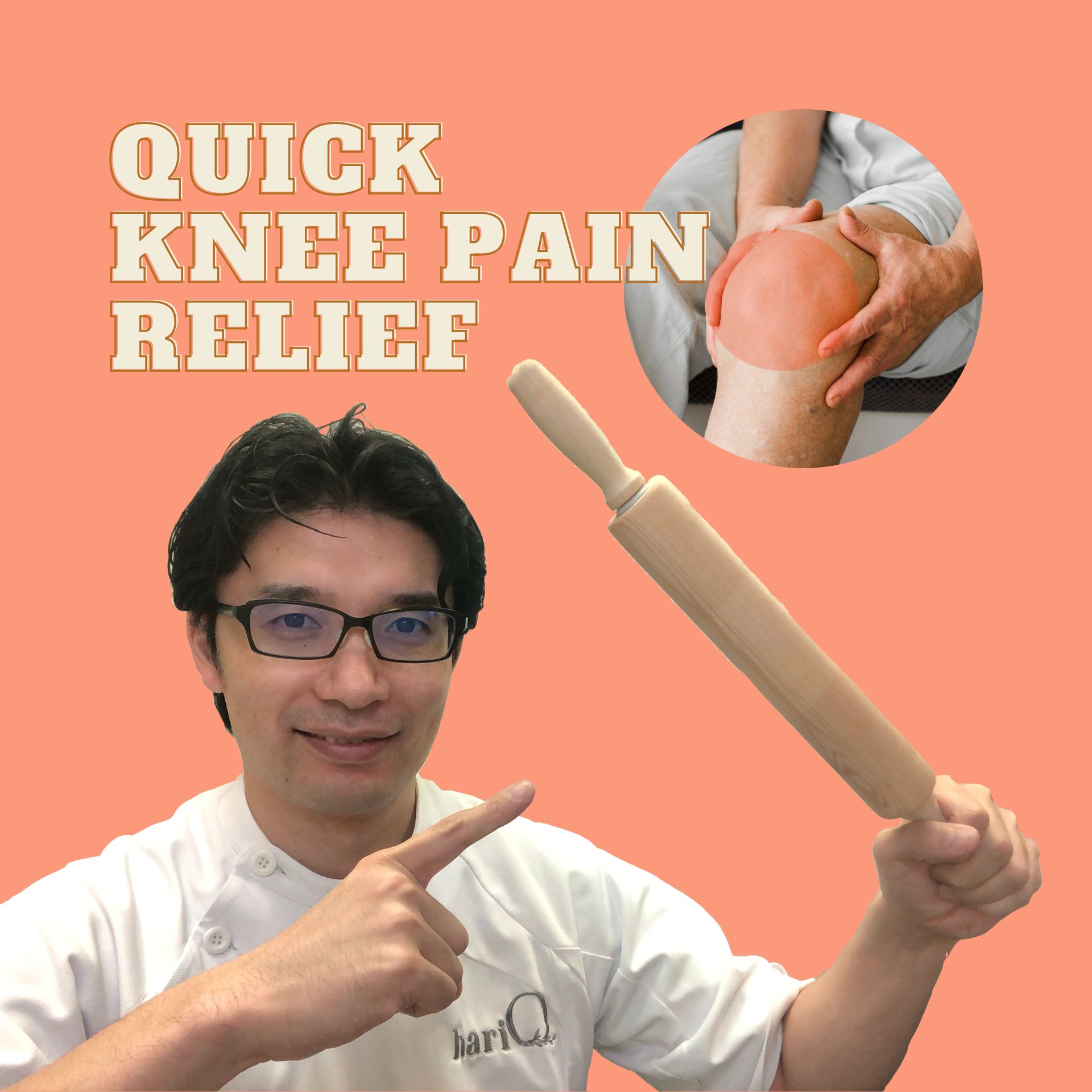
August 10, 2024
Hi there, this is Satoru from hariQ acupuncture & herbs. I have an excellent technique to share with you that you can release your chronic knee pain by yourself with a rolling pin.
If you suffer from knee pain, you know how difficult it can be to perform even the simplest tasks, such as getting up from a chair or a car, walking upstairs, or even just simply standing. Then, your motivation will be affected, and negative thinking can set in, leading to weight gain. Stress and anxiety from knee pain cause you to eat more, which puts even more pressure on your knee, making the pain worse. This creates a vicious cycle that’s hard to break. But don’t worry, you can reverse it!
The rolling pin technique I’m about to share will help you break free from the cycle and enjoy a better life without knee pain. You don’t need any special equipment, just a rolling pin from your kitchen. You can easily perform this gentle technique at home while watching TV on the couch. Try it out today and see the difference for yourself!
We understand this can be a lot of information and overwhelming: if you are looking for more support and answers, set up a free consultation with our Pain Specialist, Satoru Ozawa. Share your story, get your questions answered, and learn how you can set yourself up for tremendous success in achieving a healthy life.
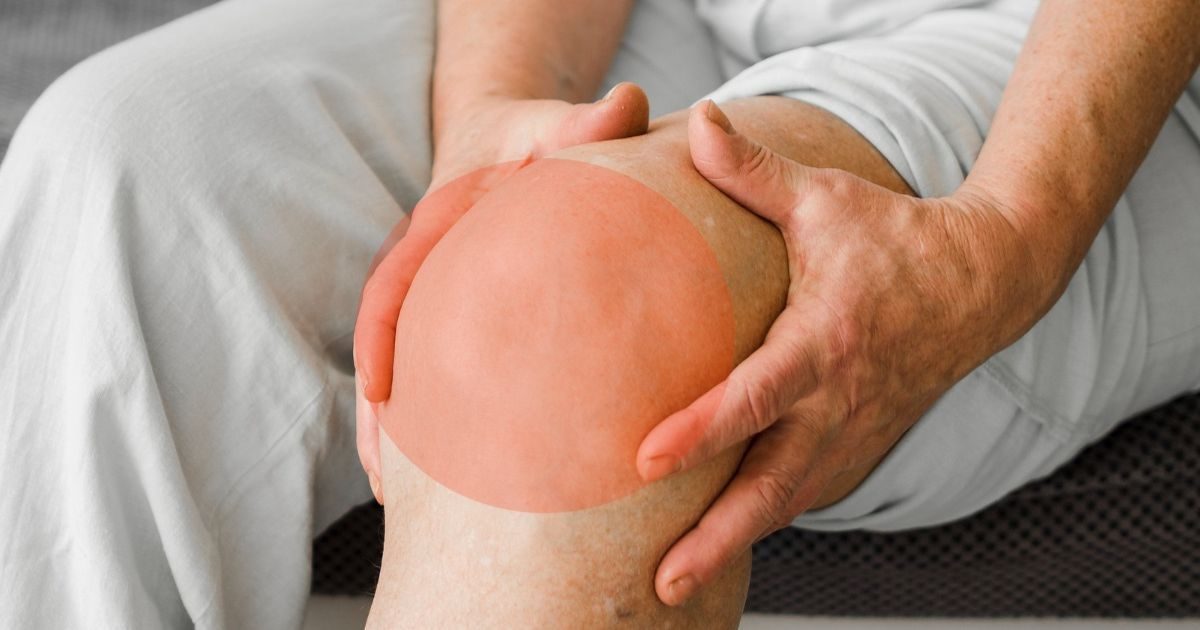
Let’s discuss knee inflammation, which can be caused by various conditions such as arthritis, tendinitis, bursitis, ligament tears, and more. All of these conditions can cause pain due to inflammation in the affected tissue. But why does inflammation occur in the first place? It is the body’s natural response to injury or infection, acting like a superhero to protect us from foreign organisms like bacteria and viruses. However, chronic inflammation can lead to various health problems. Inflammation can be caused by three factors.
Infection happens when bacteria enter the body through a cut or wound. The immune system immediately responds to fight off these bacteria. This response can cause symptoms like swelling, pain, and fever. Once the immune system successfully eliminates the bacteria, these symptoms should go away. Antibiotics may be prescribed to treat the infection and speed up the healing process.
This type of injury can result from playing sports or from repetitive strain caused by running. For example, in sports like soccer, a kick to the shin can be extremely painful, and soon after, the leg may become inflamed and swollen due to the damaged tissue. The muscle tissue is affected, and white blood cells work to repair the injured area. Typically, anti-inflammatory drugs or NSAIDs (Non-Steroidal Anti-Inflammatory Drugs) are taken to reduce swelling and pain, which can help to promote the healing process.
Inflammation can be perplexing at times, as its cause may not be easy to determine. It can be triggered by certain foods or medications. Additionally, our own body tissue can also cause issues, which can lead to conditions such as rheumatoid arthritis. Although antibiotics or NSAIDs can provide some relief, they may not always be effective in treating this type of inflammation.
It’s vital to understand that inflammation can also arise in your muscle and fascia (thin, connective tissue surrounds your muscle), particularly in the case of your knee. This inflammation can cause muscle tightness and the tendon and bone to pull, leading to pain in the surrounding tissues and joints, called myofascial pain syndrome. Surprisingly, MRI, X-rays, or CT scans can’t detect this muscle tightness, which is why doctors may misdiagnose it as tendinitis or arthritis without knowing the underlying cause.
This type of knee pain is a very common problem, with some experts estimating that up to 85% of the general population develops it. As someone who has worked with numerous knee patients, I can confidently say that many of them experience myofascial inflammation and muscle tightness that lead to knee pain.
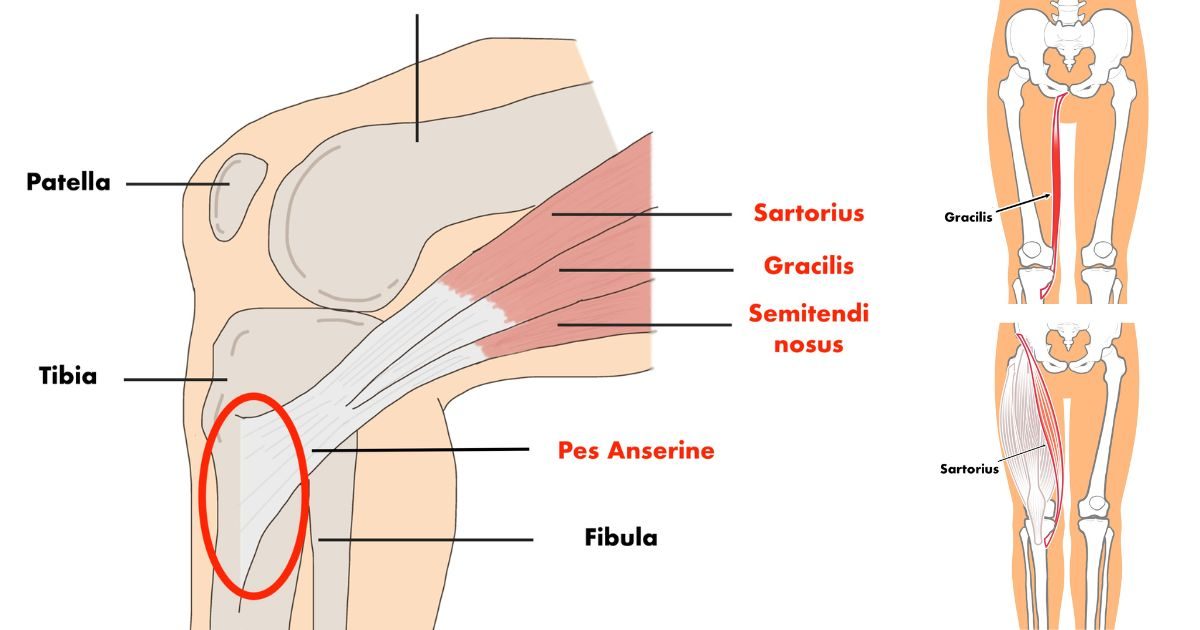
The muscles involved in the knee anatomy during the rolling pin exercise are primarily located inside the knee and attached to the tibia bone. The main muscles are semitendinosus, gracilis, and sartorius, and their attachment point is called pes anserine, which resembles a bird’s footprint. Semitendinosus is one of the hamstrings situated at the back of the thigh. Gracilis is a long muscle inside the thigh that runs from the pelvis bone, while sartorius muscle is the longest in the human body and connects the hip bone to the pes anserine.
The rolling pin technique is similar to the massage stick or roller stick technique. It helps by improving blood flow, reducing swelling and inflammation, and releasing muscle tension around the knee. The most important thing is to perform this exercise consistently every day to take care of your knee pain.
Let’s go to your kitchen and grab a rolling pin. If you don’t have one, you can ask someone to borrow it. This exercise is designed to help with the inside of your knee and can be beneficial for conditions such as Pes Anserine bursitis, arthritis (OA, RA), MCL injury, plica syndrome and medial meniscus injury.
*It’s important to note that you won’t be rubbing the rolling pin directly on your painful knee, and if this exercise makes the condition worse, please stop and see your doctor.
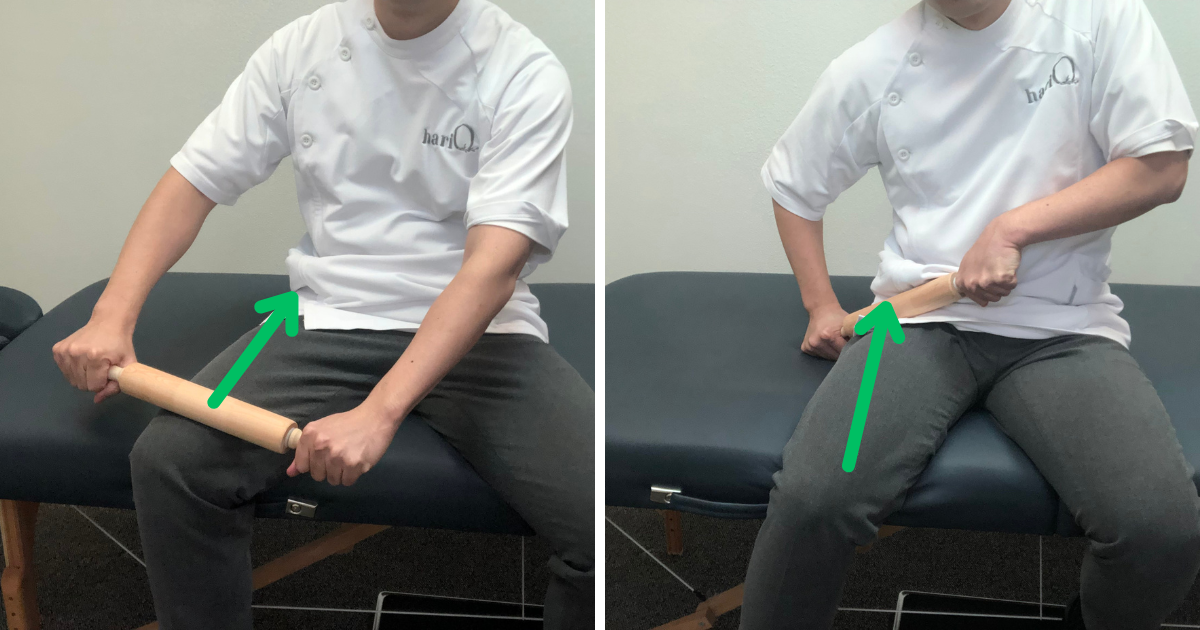
To perform the exercise, start by sitting on a couch or table and bending your knee at a 90-degree angle. Place a rolling pin just above your knee and apply pressure, making sure not to push too hard but enough to feel the rolling pin. Roll the rolling pin upwards towards your hip. You may feel sore or tender during the exercise, but that is normal. Repeat this motion 30 times, making sure to only roll upwards from your knee to your hip.
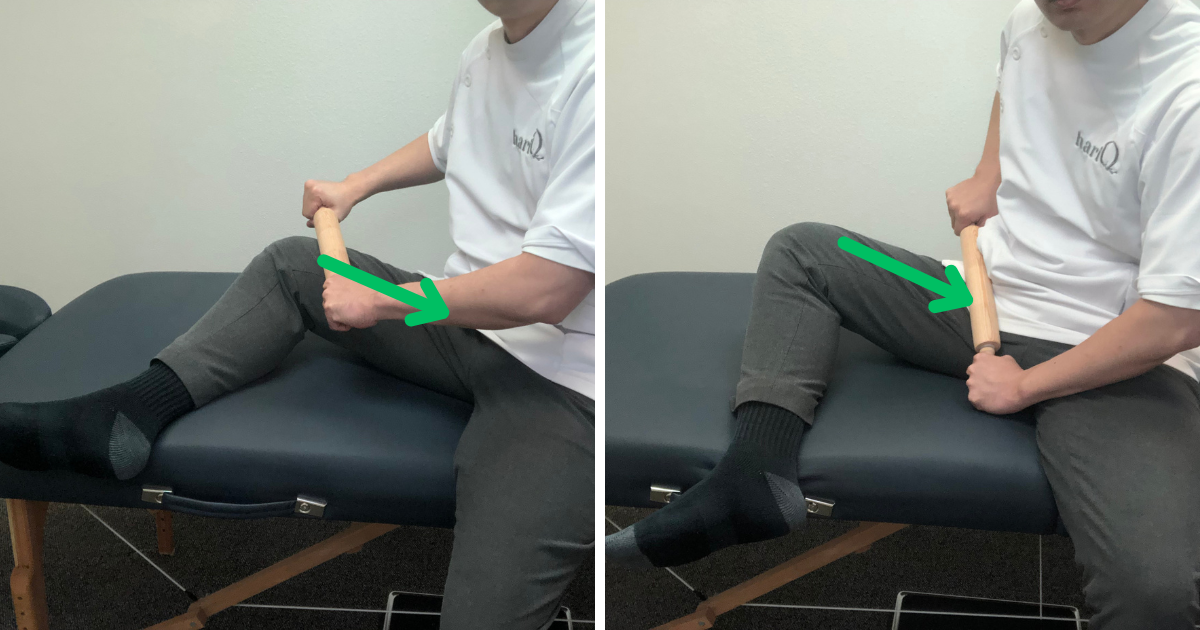
Let’s proceed with the second step. Please scoop back on a couch, bed, or table and put your feet up. Make sure you bend your knee at a 90-degree angle and place your ankle at the edge of the table. Now, place the rolling pin just above your inner knee and apply pressure while stroking it towards your groin. Repeat this stroke 30 times, always making sure to go upward from the knee to the groin. Remember to take a deep breath while performing this exercise.
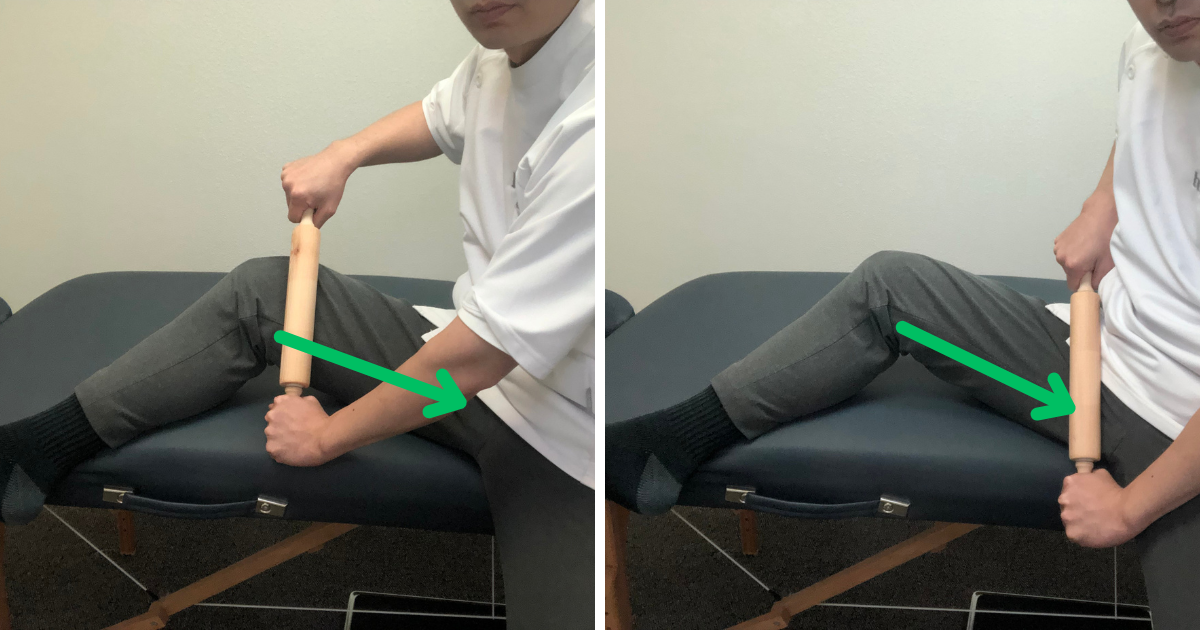
Maximize the effectiveness of your exercises with this simple yet powerful technique. Spread your leg over 90 degrees, placing your ankle still at the table’s edge and positioning the rolling pin just above the inner knee. For optimal results, apply the corner of the roller pin and repeat the stroke 30 times, always moving upward from knee to groin. Incorporate this technique into your routine and witness the remarkable difference it can make in your progress.
After the rolling pin exercise, it is advisable to apply a heat pack to your knee and groin for at least 20 minutes. You might be wondering why not use ice instead of heat. While ice can reduce swelling and relieve pain, especially after acute injury, like post-surgery or injury within 24-48 hours, it can also hinder blood circulation and slow down the activity of white blood cells, which is counterproductive to the healing process, especially if you have chronic knee inflammation. On the other hand, applying heat can help speed up the body’s natural healing process, which is why it is recommended.
Performing this exercise every day can have numerous benefits, including faster healing and reduced swelling and pain levels. This can help you regain mobility and perform daily activities like getting up from a chair, standing, walking, or climbing stairs with ease. However, in case you’re still experiencing difficulty with these activities, there are alternative treatments, such as acupuncture, before deciding on corticosteroid injections or surgery.
We'll be happy to answer your questions.
Absolutely! Acupuncture is a proven and effective solution for knee pain. During your initial acupuncture session, we conducted a thorough assessment of your knee pain level and muscle stiffness. We understand that your knee pain may have made it difficult for you to bend your knees or walk straight. Our treatments are specifically designed to reduce inflammation and swelling and restore movement in the knee. We are confident that you will experience relief from the pain after each session, as acupuncture has been shown to be incredibly practical in reducing pain and inflammation by stimulating the body’s natural painkillers.
Getting treatment at an early stage is usually best for a full recovery. Delayed treatment, such as waiting months or years after the initial onset, can make the case more complicated and recovery time much longer. Even with treatment, results are not guaranteed.
Acupuncture treatment frequency can be described by a simple rule. Newly developed or acute conditions require more frequent treatments to achieve the best outcomes, while chronic or long-standing conditions can benefit from more spaced-out treatments. To elaborate, if you have recently experienced knee pain, you may be advised to attend 2-3 treatments per week for optimal results. However, chronic cases may only necessitate one weekly visit.
If you or a loved one suffer from knee pain and want to learn more about Acupuncture and whether it’s appropriate for your case, send us a message through our contact page. Thank you for taking the time to read this blog post! I appreciate your interest and hope to see you again for future posts.
We understand this can be a lot of information and overwhelming: if you are looking for more support and answers, set up a free consultation with our Pain Specialist, Satoru Ozawa. Share your story, get your questions answered, and learn how you can set yourself up for tremendous success in achieving a healthy life.
The following blogs discuss natural remedies, acupuncture, Chinese medicine, Chinese herbs, and tips for maintaining good health.
I’d like to share some simple self-stretching techniques for chronic lower back pain, one of the most common and frustrating issues affecting people of all ages, from...
I would like to share with you what you can do with 5 TIPS and how to manage one of the most annoying conditions: tinnitus or ringing...
A 45-year-old man came to my clinic looking for some relief from the ringing in ears because he discovered that acupuncture might be a great option to...

Satoru Ozawa, L.Ac, ATC
hariQ acupuncture & herbs
Licensed acupuncturist, Certified Athletic Trainer and Chinese herbal specialist. With his 10 years of experience in Oriental Medicine, he will recommend the best natural Remedies, including Acupuncture, Chinese herbs, and health tips to relieve your suffering.